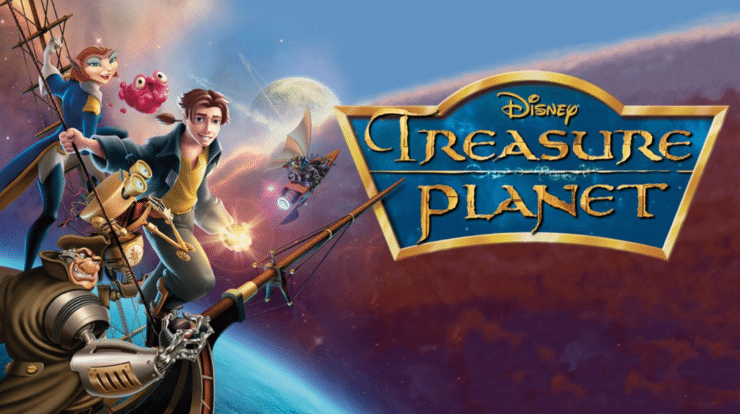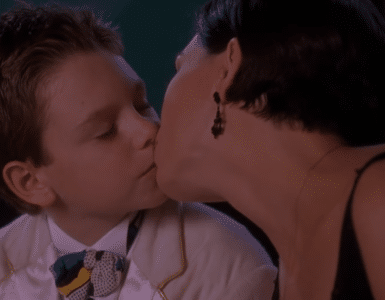Essentially every animated film produced by the House of Mouse has been a generational landmark. The studio has produced countless classics that have endured the test of time.
However, even Disney struggles from time to time. Infamously, the late 80s were a troublesome time that eventually spawned the fabled “Disney Renaissance.” In the mid-90s, the studio came up with an animated movie that changed the face of the industry forever: Toy Story.
As much as everyone loved Toy Story’s revolutionary CGI animation, the massive success of the feature film would also spell disaster for some of the more traditional Disney projects.
The movie we’ll remember today was one of the few films that failed to impress the studio with its box-office revenue, even if it successfully wowed critics and audiences alike. This is the troubled story of Disney’s Treasure Planet.
From the Books to the Theaters
From the very early days of animated features at Disney, literary classics have been a valuable source of inspiration. The reason for this is quite simple: most of these classics had already entered the public domain, meaning that the studio could focus all of its resources on paying for the expensive animation process, saving some money that would otherwise be spent on acquiring the rights to an already-established intellectual property.
Their reliance on this kind of source material is a touch ironic, considering how cagey the corporation has been with Mickey Mouse now entering the public domain.
ALSO: A Few Disney Animated Films in Desperate Need of a Sequel
Still, though the classic fables and direct literary adaptations went a bit out of favor over the years, they always acted as the basis for many of the studio’s stories. Instead of doing straight adaptations, the studio took the core elements of classic books and novels and turned them into Disney Originals: that’s precisely what The Lion King did with William Shakespeare’s Macbeth, for example.
For Treasure Planet, John Musker and Ron Clements took inspiration from one of Robert Louis Stevenson’s most celebrated novels: Treasure Island. This was not the first time that Disney greenlit a Treasure Island adaptation, however: in 1996, Walt Disney Pictures released Muppet Treasure Island, which acted as a more straightforward adaptation of the source material. Yes, you read that right: the Muppets were more true to Stevenson’s original than Treasure Planet.
Changing Times
As we established before, the success of Toy Story changed the entire paradigm of animated films forever. Its 1995 release sent a clear message: computer-animated films are the future of the medium.
Another way to interpret Toy Story’s success: “traditional animation is dead.”
How would a production studio like Walt Disney Pictures — known for its timeless animation features — react? Well, eventually their parent company would outright purchase Pixar and fully embrace the new style, bringing Buzz and Woody into the larger Disney universe. But that wouldn’t happen until 2006.
In the very early 2000s, Disney was in desperate need of a hit in the style of The Little Mermaid or The Lion King to capture the imagination of a new generation.
Enter Atlantis: The Lost Empire.
In 2001, Walt Disney Feature Animation released one of the most expensive animated features ever released. Atlantis was going to be the next big thing; even before the movie hit theaters, there were plans made for a TV spin-off, a new Disneyland ride to replace the aging 20,000 Leagues Under the Sea, and even a new live show to spice-up Disney’s Magic Kingdom.
ALSO: 10 Kid-Friendly Action Movies That Parents Can Also Enjoy
As much hope as Disney had in the project, the magic just wasn’t there. The inflated costs of production and marketing meant that Atlantis: The Lost Empire failed to live up to the studio’s expectations.
Maybe traditional animation was really done for.
The changing tastes of young moviegoers wasn’t just hurting Walt Disney. Dreamworks and Warner Bros. were also feeling the effects of Toy Story’s success, as The Road to El Dorado and The Iron Giant both underperformed at the box office.
Still, there might have been a way for 2D traditional animation to find a place in theaters at the turn of the millennium. In 2001, Studio Ghibli’s Spirited Away proved a massive success in Japan and even won the coveted Academy Award for Best Animated Feature in 2003.
What Disney had to do was find a way to combine its traditional animation talents with its cutting-edge computer-generated animation skills and produce a movie that blended the old with the new. This marriage of styles became Treasure Planet’s creed.
Meeting Halfway
Though 2001’s Atlantis: The Lost Empire failed to impress the Disney execs, the studio still had an ace up its sleeve. In typical Disney fashion, they doubled-down on Treasure Planet in 2002. Thanks to deals with McDonald’s, Pepsi, and even Kellogg’s, characters from the upcoming Disney flick were all over the place.
Disney spent even more heavily. But hey, this one is going to be a massive blockbuster, right?
Before we get into the issue of why Treasure Planet eventually became one of the most catastrophic box-office bombs of all time, we should take a look at what the movie did right — which is more than plenty.
Disney took Stevenson’s classic story and put a genuinely rich sci-fi twist on it.
John Rzeznik, lead singer of the alt rock band Goo Goo Dolls, recorded a solo track called “I’m Still Here (Jim’s Theme)” for the film. The song was released as a single and hit the Top 40 charts briefly.
The animation team applied what they called a “70-30” approach to the design to the look of Treasure Planet. What this means is that they designed characters and set pieces that looked 70% like typical pirate paraphernalia and added 30% of sci-fi elements to them. The result is a movie that feels as if it’s set in the 1700s, but with spaceships.
Besides the character designs, Treasure Planet followed Atlantis‘ lead in using CGI objects and combined them with traditionally-animated characters. It gave the film a distinct visual style that fans really appreciated.
Unfortunately, I’ll have to agree with some of the critics who said that Treasure Planet‘s characters can feel a tad bland or forgettable. However, I still believe that this adaptation has one of the best versions of Long John Silver ever seen on the silver screen.
Sinking Ships
As much as I’d like to say that Treasure Planet was the massive success that the industry needed to prove there was still an audience for more traditional animation, that was not the case with this outstanding film.
What happened to Treasure Planet was a tragedy, but a predictable one. The film actually fared rather positively with fans and many critics, but failed disastrously on the financial side. It failed to recoup its colossal budget, earning only about $38 million at the North American box office.
ALSO: Disney Teases New Films for Zootopia, Toy Story, Frozen
While Japan still revered its 2D theatrical animation, it was all but over for the medium here in America. Even if by some stroke of luck Treasure Planet had become a blockbuster, the days of traditional animation were numbered for Disney. The massive success of Shrek for Dreamworks marked a final turning point.
Treasure Planet remains one of the most undeservedly condemned Disney animated features of all time. While it’s true that the movie lacks the punch of some of the classic animated features the studio is known for, the film’s charm and sense of adventure shine brightly to this day.
It might not be the best-animated film ever made (I might even say that Atlantis is a more “complete” animated feature film) but this remains one of those exceptional forgotten gems in the Disney animation catalog you should see at least once.
Consider firing up Treasure Planet on your next family movie night!










Add comment